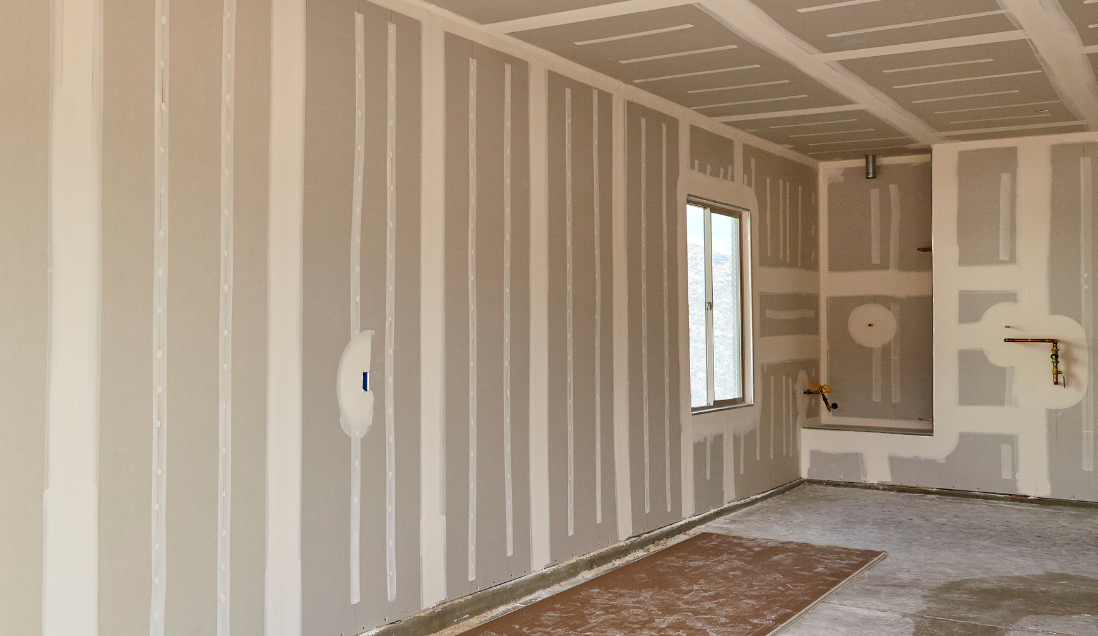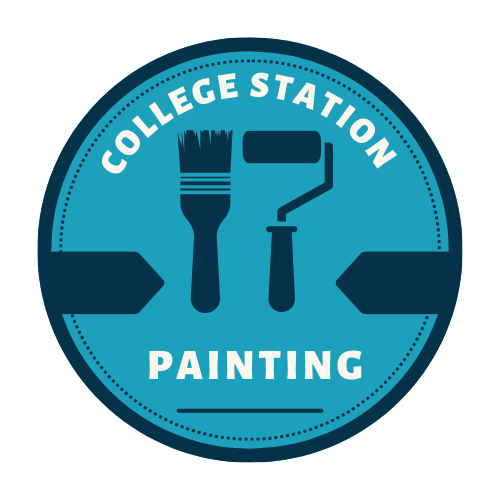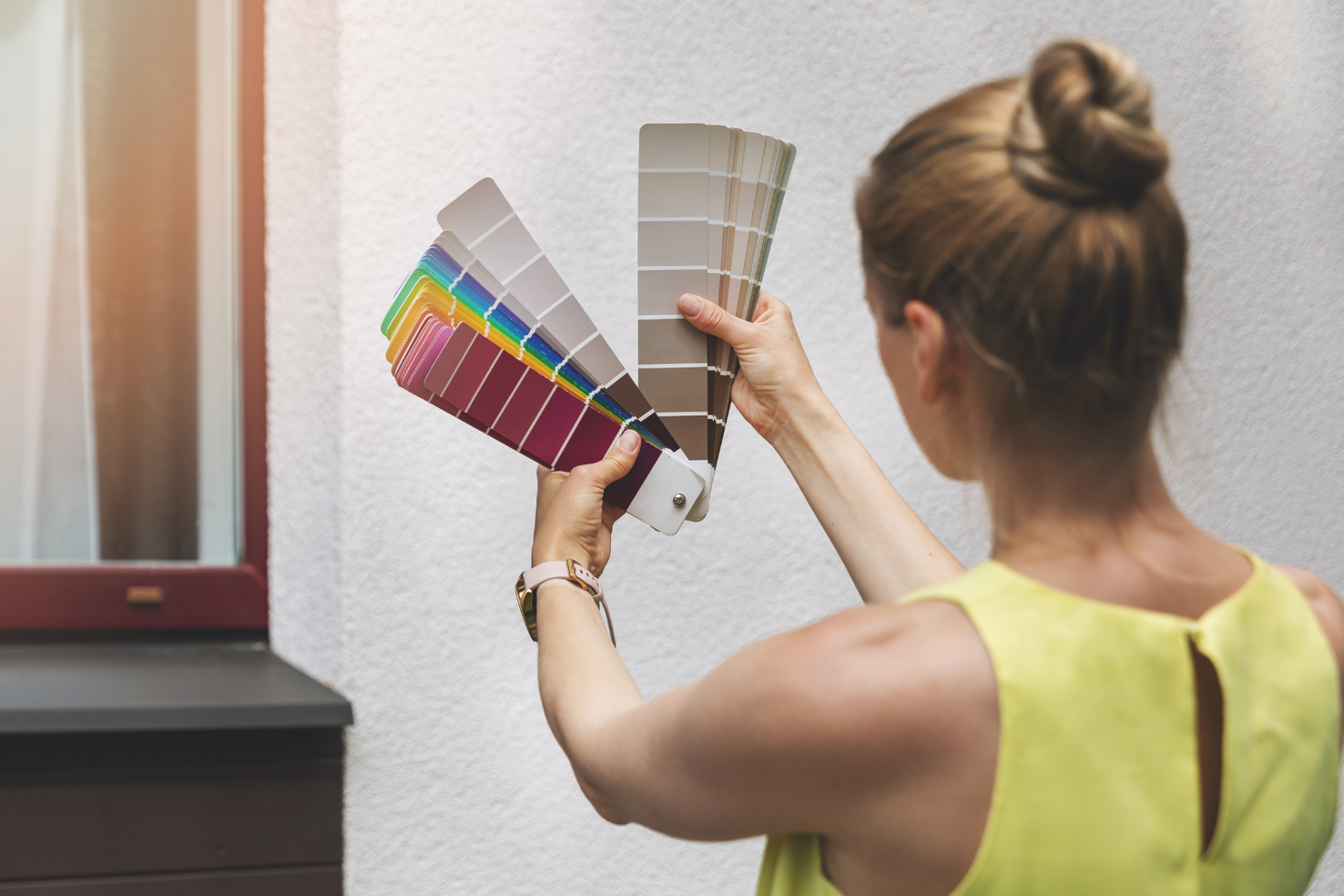A Basic Guide on Drywall and How to Do it
What's Up With Drywall and How to Install It

Drywall is a commonly used and standard building material used in construction for creating walls and ceilings. It is relatively easy to work with, making it a popular choice for DIY and pretty much any home project as well. In this article, we will discuss the different types of drywall available for different applications, how to best install drywall, how to tape drywall, how to mud drywall, and how to sand and finish drywall.
Installing drywall yourself isn't the hardest part of the process, but we recommend that you have two people for the installation as carrying around sheets of drywall by yourself is difficult. That why here at College Station Painting we always have two people on the job. It's the same when we are doing a professional painting project.
Types of Drywall for Different Applications
Lets kick things off with an examination of the different types of drywall and how they are most commonly used. There are several types of drywall available, each designed for specific applications. The most common types of drywall include:
- Regular Drywall: This is the most common type of drywall used for walls and ceilings in residential construction. It is available in various thicknesses, with 1/2-inch and 5/8-inch being the most commonly used.
- Moisture-Resistant Drywall: This type of drywall is designed for use in areas with high humidity, such as bathrooms and kitchens. It has a water-resistant facing that helps prevent moisture damage.
- Fire-Resistant Drywall: This type of drywall is designed to provide additional fire protection. It is often used in areas where fire safety is a concern, such as garages or near furnaces.
- Soundproof Drywall: This type of drywall is designed to reduce sound transmission between rooms. It is often used in apartments, hotels, and other buildings where noise control is important.
- Mold-Resistant Drywall: This type of drywall is designed to resist mold growth. It is often used in areas prone to moisture, such as basements and bathrooms.
How to Best Install Drywall
Installing drywall is a relatively straightforward process, but it does require some skill and attention to detail. Here are the steps to follow for installing drywall:
- Measure and Cut: Measure the area where you will be installing the drywall and cut the sheets to fit using a utility knife. Be sure to leave a small gap between the sheets to allow for expansion.
- Hang the Drywall: It's best to do the ceiling first, so it is supported by the drywall on the walls that come next. Start at the top of the wall and work your way down, hanging the drywall horizontally. Use drywall screws to secure the sheets to the studs, making sure to sink the screws just below the surface of the drywall.

How to Tape Drywall
Taping drywall is an important step in the installation process, as it helps create a seamless finish between the sheets. Here are the steps to follow for taping drywall:
- Apply Joint Compound: Using a drywall knife, apply a thin layer of joint compound over the seams between the sheets. Press drywall tape into the compound, smoothing out any air bubbles or wrinkles.
- Smooth Out the Tape: Use a drywall knife to smooth out the tape, pressing it into the compound to create a tight seal. Be sure to feather out the edges to create a smooth transition between the sheets.
- Apply a Second Coat: Once the first coat of joint compound is dry, apply a second coat over the tape, feathering it out to create a smooth surface. Allow the compound to dry completely before sanding.
- Sand the Seams: Once the joint compound is dry, sand the seams smooth using a fine-grit sandpaper. Be sure to sand lightly to avoid damaging the tape or the drywall.
How to Mud Drywall
Mudding drywall is the process of applying joint compound to the seams between the sheets to create a smooth, seamless finish. Mudding and sanding is the most challenging part of drywalling. A poorly done job will show through after painting and will be unsightly for years and years. Mudding and sanding does take some practice to master and is probably the best reason to not attempt installing drywall yourself, and instead hire a professional company like College Station Painting to do the job.
Here are the steps to follow for mudding drywall:
- Apply Joint Compound: Using a drywall knife, apply a thin layer of joint compound over the taped seams, feathering it out to create a smooth transition between the sheets.
- Smooth Out the Compound: Use a drywall knife to smooth out the compound, pressing it into the tape to create a tight seal. Be sure to feather out the edges to create a smooth surface.
- Apply a Second Coat: Once the first coat of joint compound is dry, apply a second coat over the seams, feathering it out to create a smooth surface. Allow the compound to dry completely before sanding.
- Sand the Seams: Once the joint compound is dry, sand the seams smooth using a fine-grit sandpaper. Be sure to sand lightly to avoid damaging the drywall or the tape.

How to Sand and Finish Drywall
Sanding and finishing drywall is the final step in the installation process, and it is crucial for achieving a smooth, professional-looking finish. Here are the steps to follow for sanding and finishing drywall:
- Sand the Seams: Use a fine-grit sandpaper to sand the seams smooth, being careful not to sand too aggressively and damage the drywall or the tape. Sand in a circular motion to avoid creating grooves in the surface.
- Apply Texture (Optional): If desired, you can apply a texture to the drywall surface using a texture roller or spray gun. This can help hide imperfections and create a more decorative finish.
- Prime the Surface: Before painting, it is important to prime the drywall surface to ensure a smooth, even finish. Use a high-quality primer that is compatible with the type of paint you will be using.
- Paint the Surface: Once the primer is dry, you can paint the drywall surface using a high-quality paint. Be sure to apply multiple coats for a smooth, even finish.
Book a Service Today
We will get back to you as soon as possible
Please try again later
Call
All Rights Reserved | College Station Painting.





